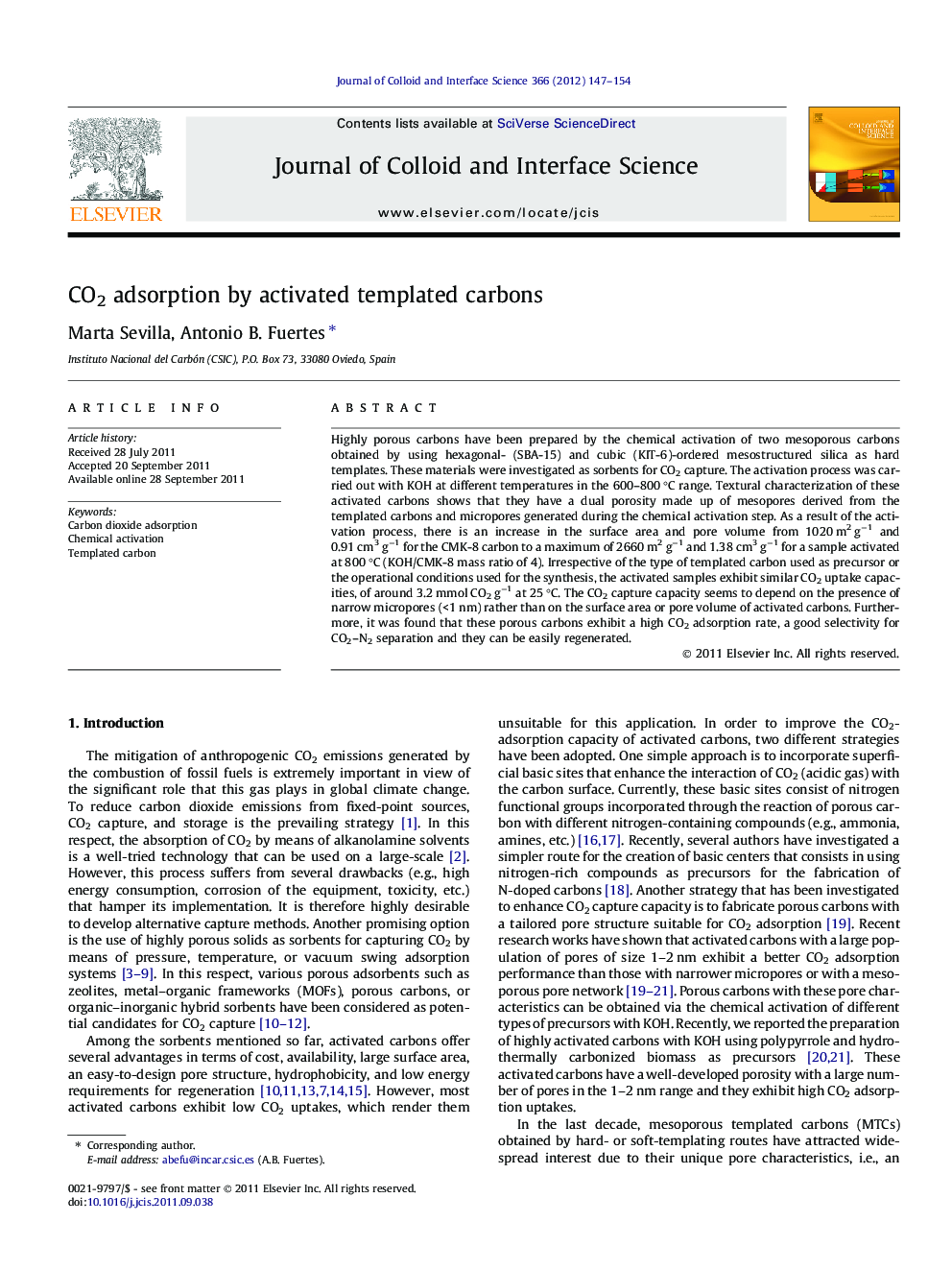| کد مقاله | کد نشریه | سال انتشار | مقاله انگلیسی | نسخه تمام متن |
|---|---|---|---|---|
| 608393 | 880587 | 2012 | 8 صفحه PDF | دانلود رایگان |

Highly porous carbons have been prepared by the chemical activation of two mesoporous carbons obtained by using hexagonal- (SBA-15) and cubic (KIT-6)-ordered mesostructured silica as hard templates. These materials were investigated as sorbents for CO2 capture. The activation process was carried out with KOH at different temperatures in the 600–800 °C range. Textural characterization of these activated carbons shows that they have a dual porosity made up of mesopores derived from the templated carbons and micropores generated during the chemical activation step. As a result of the activation process, there is an increase in the surface area and pore volume from 1020 m2 g−1 and 0.91 cm3 g−1 for the CMK-8 carbon to a maximum of 2660 m2 g−1 and 1.38 cm3 g−1 for a sample activated at 800 °C (KOH/CMK-8 mass ratio of 4). Irrespective of the type of templated carbon used as precursor or the operational conditions used for the synthesis, the activated samples exhibit similar CO2 uptake capacities, of around 3.2 mmol CO2 g−1 at 25 °C. The CO2 capture capacity seems to depend on the presence of narrow micropores (<1 nm) rather than on the surface area or pore volume of activated carbons. Furthermore, it was found that these porous carbons exhibit a high CO2 adsorption rate, a good selectivity for CO2–N2 separation and they can be easily regenerated.
Figure optionsDownload high-quality image (127 K)Download as PowerPoint slideHighlights
► Templated mesoporous carbons are chemically activated with KOH.
► Large number of micropores are generated by activation.
► Activated carbons exhibit high CO2 adsorption uptakes and they can easily be regenerated.
Journal: Journal of Colloid and Interface Science - Volume 366, Issue 1, 15 January 2012, Pages 147–154